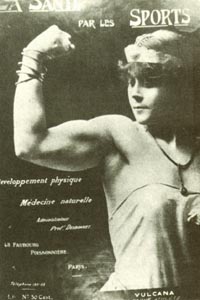One of the many things that my friend and teacher Dara (studio owner and yogi extraordinaire) is great at is talking about strength and flexibility.
“Most of us are naturally more strong or more flexible,” she says, and reminds us to go with what we’ve got, to inch towards flexibility if we’re naturally more strong, to focus on building strength when more flexible, even in postures that look like they’re all about stretching (there’s pretty much always a duality). I am not a particularly limber person, so I appreciate this reminder, especially in those times when the old hamstrings are barely budging, limiting deeper movement.
I think of this reminder when I’m not in class, too, because I think that it is just lovely. I think of it frequently in relation to massage and to common complaints about hypertonic areas. Sometimes those achy places are just the places where you’re strong — that tight spot between your shoulder blades, that ache at the base of your skull, the tension in your quads. They are places that you’ve strengthened, whether through deliberate exercise or unnoticed work, holding your head at a certain angle, moving through life a certain way, carrying your things just so.
Massage therapy can help you unwind. Sometimes the job is to soothe muscles achy from a long run so that you can turn around and hit the road again. Sometimes it is to identify the places you hold without realizing, the little strengths you’re ready to let go, and to begin to find more ease.
I think there’s ease in words, too, in shifting the narrative from cursing aches and pains to thinking about all the living that’s brought them on, all the little places where you’re stronger than you thought.


Is it strength that complains or is it being too stretched and under tension? With head forward positions, the complaint is generally in the upper back and neck but the culprit is considered to be the muscles at the front of the head/neck such as sternocleidomastoid
Thanks for your note! I tend to agree with your assessment, but I don’t think it’s necessarily so cut and dry. We humans have all kinds of complaints! I had forward head posture for most of my life and know it well (i.e., slip right back into it whenever I’m not paying attention) and, while my own chief complaint has almost always been pain in my upper back, I feel it in the SCMs as well, and I feel it like crazy in crunched suboccipitals. The latter is a fairly common complaint. The former not so much, but, like the pecs, I always work the SCMs when treating forward head positions, and it is incredibly common for that vague shadow of a frown to flit over clients’ faces and for people to say “wow — what is that?” The purpose of the post was not to say that we predominantly feel pain in shortened areas, but to give those places a little love and thanks for their work when we notice them.
Additionally, and I may be getting myself in some hot water here (hey, it’s winter — I could probably use some cooking), I’m not entirely convinced that overly lengthened muscles are never strong. Some of them are weakened by wonky posture, sure, but I think that those around the shoulder girdle have strength — weird strength, but strength — from eccentrically contracting to hold everything in place, and that the upper traps and levator scap might even work a little overtime on lateral flexion and rotation of the cervical spine to compensate for overly shortened SCMs. I would not go so far as to say that they are the main “culprit” as opposed to shortened SCMs and pecs, but I would go so far as to thank them for all their hard work!
Thank you again for your comment, which encouraged me to think more carefully (and generally to think more).